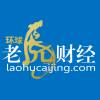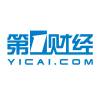引领中国与国际市场接轨 中再谱写新时代再保险发展新篇章
中国领先优势吸引海外投资者
中国市场对于承保公司和保险经纪公司来说机遇处处,然而竞争激烈、监管趋严。海外投资者很快发现,中国保险市场跟其他海外市场一样:资金容量大,竞争力强;随着中国的互联网用户群和流动支付的市场日渐扩大,像网络风险这样的新型保险吸引了越来越多买家的注意力。
当然,中国市场还是非常不同的。尽管我们拥有这些发达市场的特征,但同时中国也体现了新兴经济体的保险市场特点;汽车拥有量增加,私人汽车保险等相关业务迅速增长;不断发展的法律体系也推动了责任保险的发展和采用。国内企业资产价值的稳步上升也创造了不少保险需求。
国内本年度非寿险保费总额超过1000亿美元。它的增长速度虽然放缓,但仍保持两位数增长。根据中国银行保险监督管理委员会(中国银保监会)的数据,2018年的财产/意外保险收入增长了11.52%。由此观之,市场广阔的中国提供了多种由需求驱动的机遇,但因供应也随之出现,国内市场已经成熟饱和,有时甚至期待着新的需求。
全球保险价格跌至谷底,虽然中国不能免受影响,但国内的总保费收入却有所上升。至少在过去10年中,中国市场的供应量一直充足,这种供应及其产生的竞争更将市场利率一路下调。
©摄图网
国家政策为保险业进军国际市场护航
与此同时,国内保险公司的总资产和债权与保费收入同步上升,这是国家全面深化并不断推进保险市场监管改革的伟大成果。中国银保监会亦引入了严格的资本充足率规则,可见国内保险公司已达到国际水平。
中国的海外发展创造了大量新的非寿险需求,并为国内专业保险公司带来了重大机遇。国家支持的“一带一路” 致力于通过提升欠发达国家的基础设施,促进跨国经济合作,支持 “一带一路” 成员国的经济增长。这是一个前所未有的国际项目, “一带一路” 的保险机会不仅来自项目本身,还来自升级的金融服务业,以及国内法律和司法系统的巨大演变。这意味着不少保险公司将受益于 “一带一路” 的巨大潜力,包括提供信用风险、政治和责任保险的保险公司,以及提供建筑和工程承保和专业知识的保险公司。
国家政策亦有利于中国离岸行业的发展。国家领导人最近承诺,投放3600亿美元用于可再生能源发展,预计将鼓励更多国家参与中国可再生能源市场。中再集团作为中国保险企业走出去的“先行者” ,除了先后在伦敦、香港、纽约、新加坡设立了海外机构,最近也刚宣布在伦敦劳合社推出可再生能源合作计划,重点关注中国海上风电场建设和运营的再保险项目,切实有效地支持了我国发展战略,引领中国保险行业进军国际市场。
©摄图网
加快国际市场发展步伐
中再集团收购桥社英国控股公司证明了保险公司国际化的好处。透过借助国际业务平台,中再集团开拓更多发展机会,最大程度实现互利共赢。与国际公司的密切合作,也有利于中再集团进一步完善国际布局,提升在全球市场中的知名度和影响力。以中再集团为代表的中国保险企业,将向全球扩张,与世界其他地方的发展互相呼应。
中国的保险市场对海外投资者来说,是既充满机会,又非常不同。虽然国内外的监管正在加剧,但市场将变得更加健康,更具吸引力。中国保险业迈向国际化将带来积极的结果。作为中国国有再保险集团,中再集团将着眼于服务国家战略,与世界接轨,海外再扬帆。
文/中再承保代理有限公司副总经理黄昆
本文发表于英国保险业受众广泛的《The Insurer》杂志,英文原文如下:
Viewpoint: Insuring a positive outcome in China
Opportunities are plentiful in China for risk carriers and brokers, but competition is rife and regulation is mounting.
Visitors to China’s burgeoning insurance market would quickly find that, in many ways, it is not much different from others. Capacity is abundant. Competition levels are high. New perils like cyber risk are increasingly attracting buyers’ attention – and their premium – in a market that includes the largest population of internet users in the world and mobile payment is widely used.
In other ways, the Chinese market is very different. Alongside these developed market characteristics, China concurrently behaves like an emerging economy insurance market, with swift growth in lines such as private motor, as car ownership multiplies, and an evolving legal system that is driving the early development and adoption of liability insurances. A steady rise in the value of corporate assets has also created demand.
Total annual non-life premium exceeds $100bn. Its growth rate, although slowing down, remains in double digits. Property/casualty premium income grew 11.52% in 2018, according to data from the China Banking and Insurance Regulatory Commission (CBIRC). In this respect, the vast country offers demand-driven growth opportunities on multiple fronts, but already the market is crowded and mature, as supply has already arrived, sometimes even anticipating demand.
Total premium income has risen, despite China’s lack of immunity to the global phenomenon of rock-bottom insurance prices. Capacity supply in the Chinese market has been abundant for at least the past 10 years. That supply, and the competition it engenders, has pushed market rates down all the way. Achieving adequate prices for catastrophe risk exposures is a particular challenge.
Meanwhile, local insurers’ total assets, as well as claims, have risen in step with premium income, in what is a well-governed sector. The CBIRC, itself the trendy product of last year’s merger of China’s banking and insurance regulators, has introduced stringent capital adequacy rules. On the ground, five giant, publicly traded insurers control about 60% of the market, including China’s huge life insurance industry.
Development outside China has created a large slice of new non-life insurance demand and, with it, significant opportunities for specialist insurers. The core objectives of the state-backed Belt and Road initiative are to facilitate cross-border economic co-operation and support domestic economic growth in less developed countries by upgrading local infrastructure. Belt and Road, therefore, covers countries and regions with various social and political environments. The lack of political stability in is a major challenge and complicates the risk profile of the initiative.
It is an international project unlike any other ever seen. Based on infrastructure investment and construction, the Belt and Road insurance opportunity arises not just from the projects themselves, but also from the upgraded financial services industry and the evolution of the legal and justice systems the enormous initiative demands. That means insurers offering credit risk, political violence and liability insurances will find significant potential along the belt and road, along with those offering construction and engineering coverage and expertise.
The offshore sector in China also benefited from various national policies. Chinese government recent commitment to offer $360bn for renewable power development is expected to encourage more international involvement in the Chinese renewable energy market.
The developed market side of China means this demand will be met. In traditional lines of business, the big three brokers have broad expertise to deploy across the lines, extensive client relationships and the international connections to source capacity and underwriting knowledge. Meanwhile, local Chinese brokers are building up their presence rapidly.
Chinese insurers are also reaching out. Belt and Road has spurred international expansion, often in step with Chinese banks, which already possess an overseas presence. Local insurers operating abroad had been prohibited from covering foreign risks that do not include Chinese investment, but that prohibition has been lifted. China Re’s acquisition of Chaucer has demonstrated the benefits of internationalisation for insurance companies. The global expansion of the Chinese insurance sector is under way.
Echoing developments elsewhere in the world, innovative, insurtech-driven distribution platforms are set to become more important and are already making waves. A rising number of start-ups have launched with models based on artificial intelligence, big data analysis or blockchain technology. Some of them have come to market offering strong competitive advantages. Incumbent insurers are taking note, as are the local tech giants, which have made strategic investments in insurance companies large and small.
China’s insurance market, then, is both familiar and very different. Opportunities are plentiful, but competition is rife and arising from familiar and unexpected players. Regulation is mounting, but the market is healthier as a result. Risk carriers and brokers working with the right partners will find much to entice them, but care must be taken to ensure positive outcomes.
By Kun Huang, China Re Underwriting Agency
(专题)
1、头条易读遵循行业规范,任何转载的稿件都会明确标注作者和来源;
2、本文内容来自“21世纪经济报道”微信公众号,文章版权归21世纪经济报道公众号所有。



























